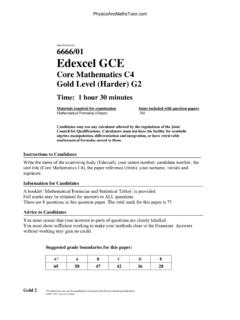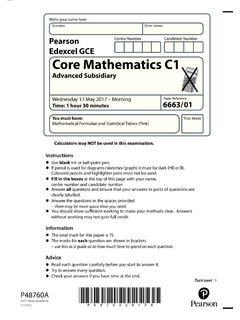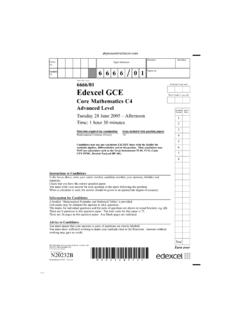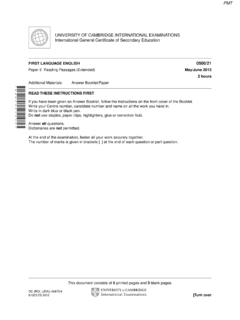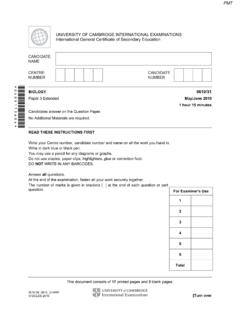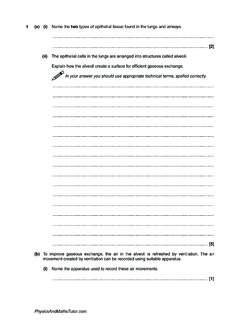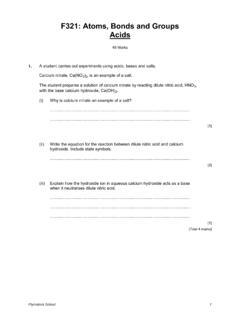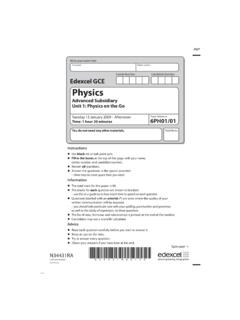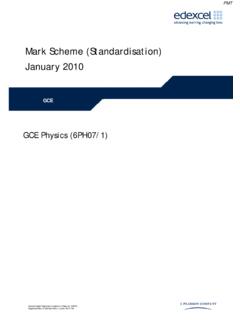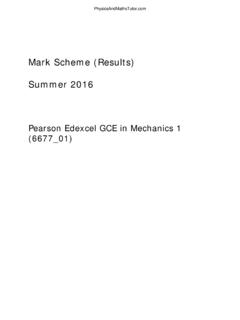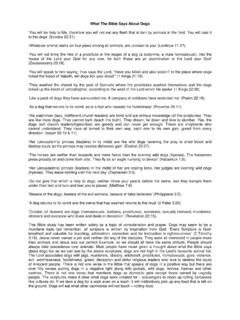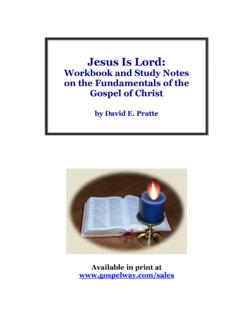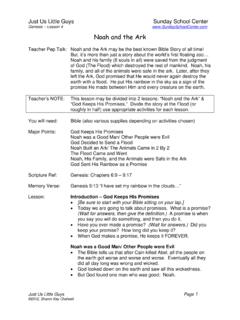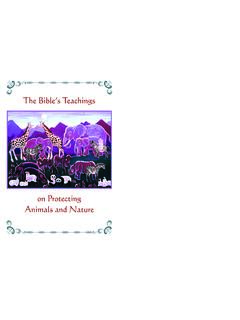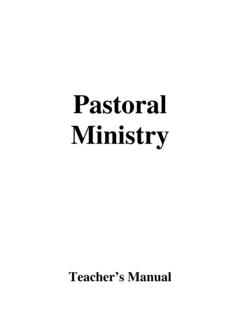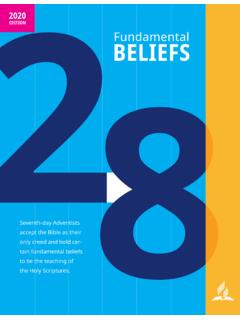Transcription of AQA English Literature GCSE A Christmas Carol: Themes
1 AQA English Literature GCSE A Christmas Carol: Themes The Supernatural Supernatural During the Victorian era, the Gothic genre began to permeate Literature . This encompassed supernatural Themes which were particularly popular at the time. It is often said that the Victorian era was a golden age for these gothic and supernatural motifs , a trend which Dickens avidly explored. This is seen by the words of John Forster, both his close friend and biographer. In his book The Life of Charles Dickens , he writes that Dickens had a hankering for the supernatural.
2 This means that he was curious about the subject, perhaps explaining why he included it within his work. Dickens branded A Christmas Carol as a ghost story , perhaps because it was a popular tradition to read ghost stories during the festive time. The supernatural is a key theme in the novella as it provides a logical structure to the plot. This is achieved by the three Ghosts who ultimately enable Scrooge to change. It could therefore be said that Dickens uses the Ghosts as catalysts to Scrooge s transformation. The Ghosts also serve to heighten the dramatic effect of the novella.
3 This effective because they introduce a greater consequence to Scrooge s actions, increasing the importance and urgency of his redemption. While the Ghosts are considered to be the most explicit representation of the supernatural within the novella, Dickens includes other, more implicit, ideas surrounding this theme. For example, Scrooge s character could be described as somewhat supernatural because he is only presented as one of two extremes. Dickens presents no middle-ground for Scrooge, characterising him to be either as hard and sharp as flint or as light as a feather.
4 This emphasises Scrooge s transformation while also acknowledging his supernatural qualities. Dickens may have chosen to present him in this way to convey the idea that if it is possible for Scrooge to change then it is also feasible for his readers. The Church The beliefs and authority of The Church greatly influenced public perception of the supernatural. The theme is split into two different categories: ideas which follow the teachings of The Bible (these were permitted) or ideas which contradict the Word of God (these were labelled as sinful). The idea of purgatory (the Christian belief of an intermediate state following death) plays a prominent role within the novella.
5 It is a concept which Dickens recognises in Stave One Scrooge sees the air filled with phantoms . Crucially, Dickens adheres to the biblical teachings surrounding this idea, allowing him to publish the novella without controversy. By using religious doctrines (beliefs) Dickens creates a believable narrative, particularly to religious Victorians. As a result, they were more inclined to believe in and respect the authority of the Spirits, heightening the impact of the novella. Readers who are not particularly religious are required to 'willingly suspend disbelief' which means to put aside their criticisms and enjoy unbelievable aspects of the novella for the sake of enjoyment.
6 Explicit Forms The most obvious presentations of the supernatural are the Ghosts which appear to Scrooge. They can be regarded as structural tools to help drive forward the plot . However, it is important to avoid simply dismissing them as plot devices . This is because they play a greater role than this as they are used by Dickens to teach the reader lessons and symbolise key ideas within the narrative . Each of the Ghosts can be considered a personification of what they are supposed to represent: The Ghost of Christmas Past: This spirits is used to show both Scrooge and the reader the actions which have led up to Scrooge becoming the man he is.
7 Dickens presents the Ghost to be a personification of the past, which is reflected in his appearance. Dickens describes the Ghost to be like a child: yet not so like a child as like an old man . It could be argued that the true supernatural quality of the Phantom is its effortlessly paradoxical nature . To be an old man but also a child is only possible through some supernatural medium which the narrator freely admits. The Spirit is also presented to have a certain quality of innocence. Dickens details that he wore a tunic of the purest white which is heightened by the bright clear jet of light that the Spirit emits.
8 This could be symbolic of the truth which is found in Scrooge s memories. The Ghost of Christmas Present: This Phantom resembles Father Christmas which was an image prevalent in the nineteenth century and was used to represent a festive spirit. He is described to be a jolly giant who sits on a throne . Here Dickens uses size to increase the Ghost s impact and present him as a dominating force. Dickens characterises the Spirit as God-like which is highlighted through Scrooge s perception of him. He believes that the apparition is related to God in some way, claiming that blue laws (policies prohibiting leisure on Sundays) are observed the name of his family.
9 However, the Spirit s true supernatural property is not his religious significance but his ability to spread joy. Dickens reveals that the Ghost sprinkled incense on the food that people were eating, causing their humours to be restored directly . Incense were used to amend disagreements, an interesting choice as this was available to Dickens readers. By choosing such an accessible method for a supernatural being, Dickens emphasises that readers too should endeavour to spread joy and Christmas Spirit . The Ghost of Christmas Yet to Come: The last spectre to arrive is described not as Ghost but as a phantom.
10 Dickens draws parallels between the ghost and the Grim Reaper who is a personification of death . He outlines that it wears a deep black garment which concealed its head, its face, its form and left nothing visible except one outstretched hand . The reaper is a well-known symbol of death and so by likening the two characters Dickens establishes a sense of doom through the spirit. This heightens the tensions before the climax of the novel, adding gravity to the situation that Scrooge is in. Ignorance and Want: The children are described as wretched, abject, frightful, hideous, miserable , perhaps to symbolise the disease of Ignorance and Want in society.
